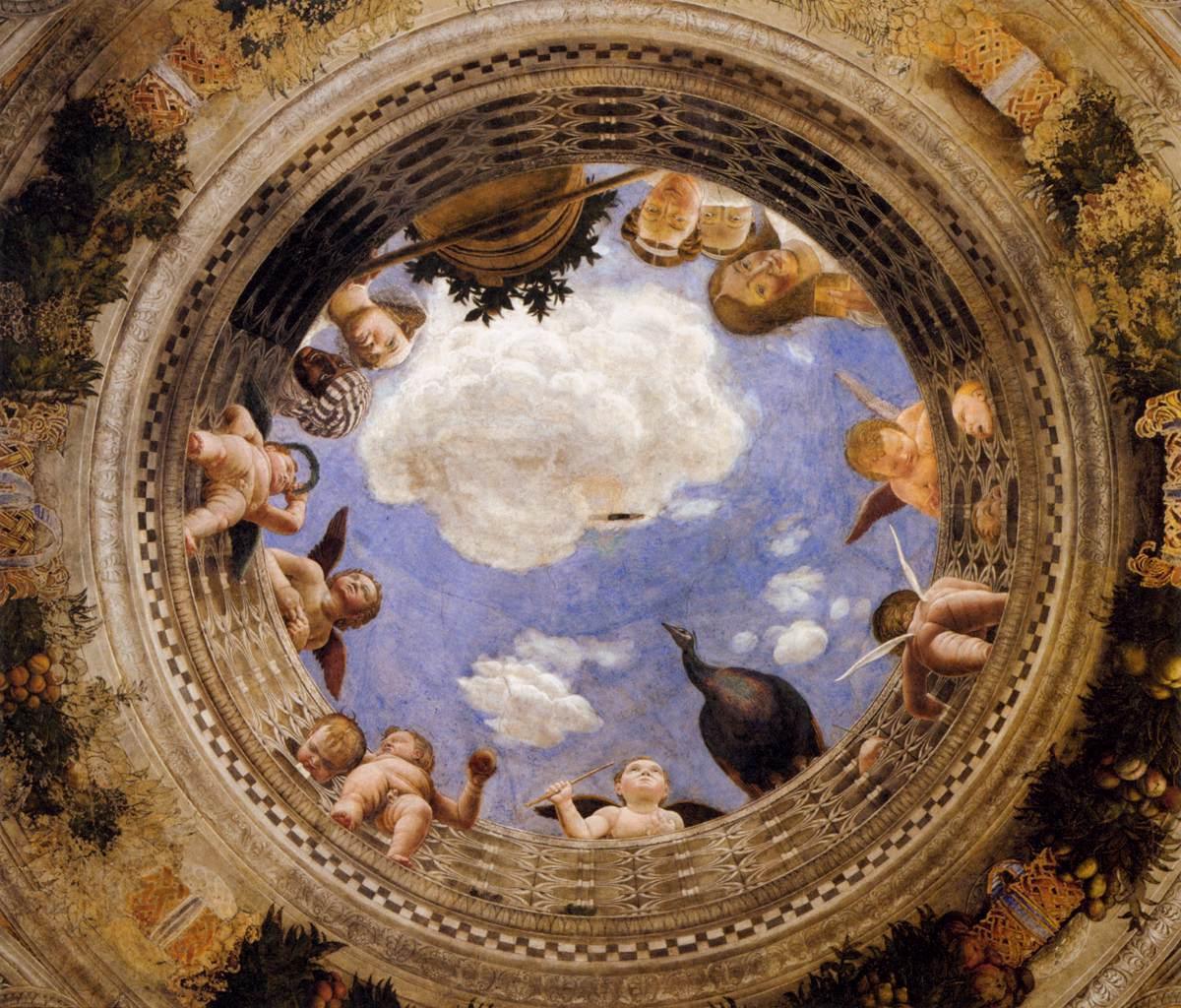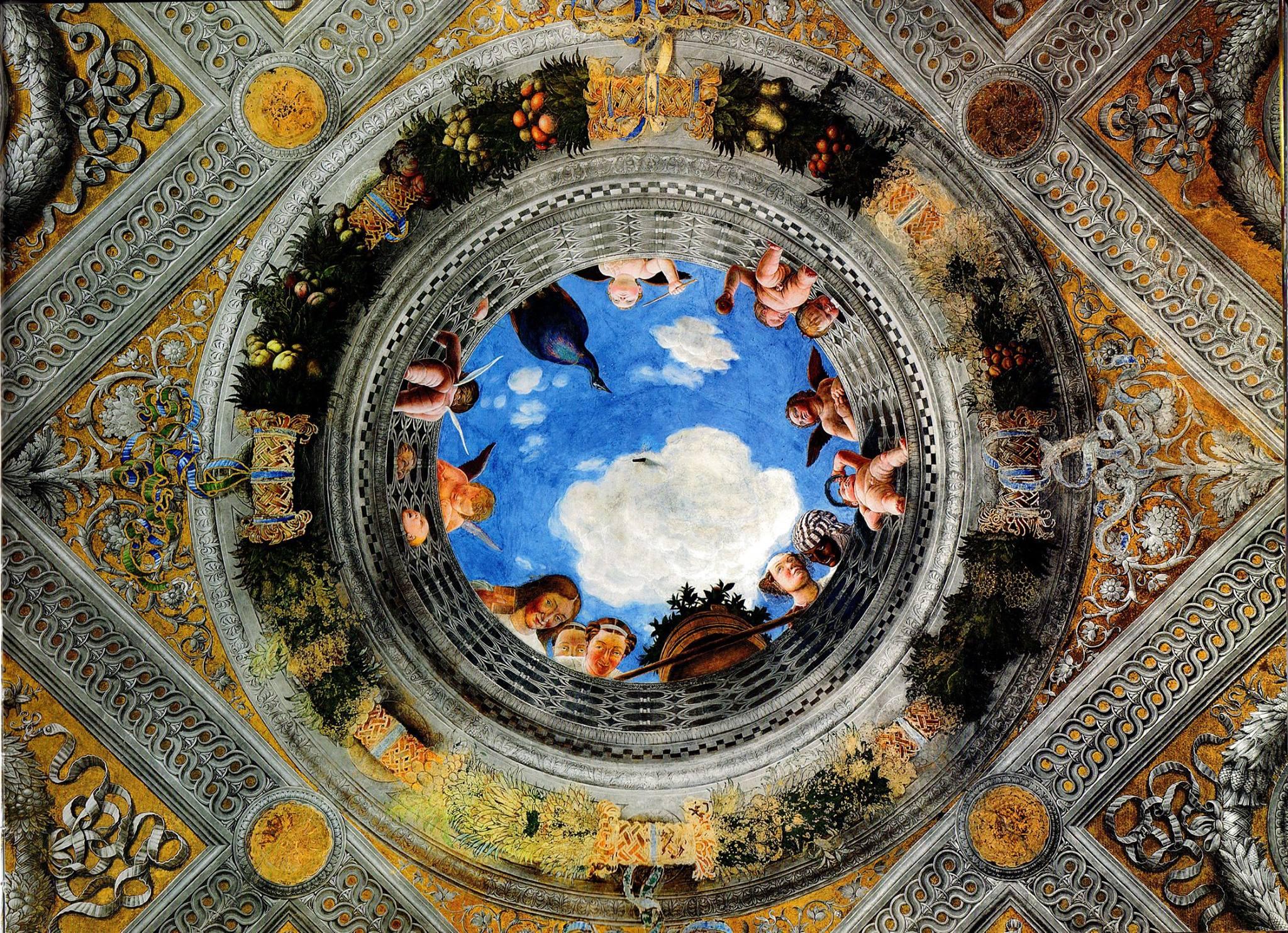Description
The Camera degli Sposi ("wedding chamber"), sometimes known as the Camera picta ("painted chamber"), is a frescoed room with illusionistic paintings by Andrea Mantegna in the Doge's Palace, Mantua, Italy.
One of the most famous examples of early Renaissance art, the ceiling and mural painting in the Camera degli Sposi (Hall of the Spouses or Bridal Chamber) located in the Palazzo Ducale, Mantua, was executed by the Padua-born painter Andrea Mantegna .
The artist earned a high salary of 180 ducats a year as court painter to Ludovico Gonzaga (1412-78), Duke of Mantua. The sum reflected his reputation as a leading figure in early Renaissance painting and perhaps the greatest Italian artist of the 15th century outside of Florence.
Mantegna was the first painter of royal status to reside in Mantua, where he spent 46 years of his life in the service of Ludovico and his successors. The Camera degli Sposi was a relatively small reception room located in the north tower of the Castel San Giorgio, part of the Doge's Palace, which, for unknown reasons, was later renamed the Hall of the Spouses. It is also called, more accurately, the Camera Picta (painted room), and Mantegna's illusionistic fresco paintings transformed it with color and added space, using the trompe l'oeil painting technique known as quadratura. In fact, his images seem to extend the Camera Picta through the ceiling and into the sky, and through the walls on either side to a terrace and landscape.
In the vaulted ceiling of this small square room is the famous circular window, or oculus, which Mantegna used to create the illusion of a painted space with an open view to the sky for the first time in the history of Western art. The opening is circumscribed by a balustrade over which playful putti, human and animal figures, lean downwards. This ceiling panel di sotto in su uses foreshortening to position the viewer well below the painting, a perspective that was emulated by later artists, especially during the Baroque era.
The surrounding ceiling ribs and decorative lozenges are painted to simulate marble, while the bottoms of the triangular spaces at the edges of the ceiling are painted to resemble mosaics, a device later used by Raphael in the Raphael Rooms in the Vatican. .


